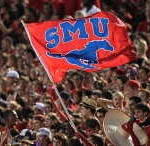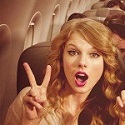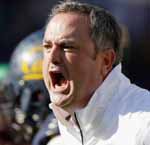By JEFF MILLER / Special Contributor to The Dallas Morning News
UNIVERSITY PARK – Seventy-five years after SMU and TCU each claimed pieces of the mythical football national championship, TCU will bring a team to the Mustangs' Gerald J. Ford Stadium on Friday night that is back in the national title conversation. SMU and its fans can only hope the similarities between the area private schools means the Mustangs can replicate the Horned Frogs' current success.
"What I hear from our alums is, 'If they can do it, we can do it,' " SMU athletic director Steve Orsini said. "I don't disagree with that. I think that's what we've been hired to do."
TCU (3-0) will come to SMU ranked fourth in the country, aiming to top last year's BCS bowl by playing in the BCS national championship game.
SMU (2-1) will come in a prohibitive underdog at home, has lost nine of its last 10 to TCU and might not have the majority of fans in its stands.
The Mustangs' journey over that same 14 years has featured fits and starts. Last year's win at the Sheraton Hawaii Bowl was the school's first postseason trip since before the 1987-88 death penalty hiatus.
"We're hoping one day we can be in that class," June Jones, SMU's third-year coach, said of TCU.
Frogs coach Gary Patterson said of his counterpart: "He's using patience, and I think he's getting support from the administration that maybe past coaches didn't."
TCU's rise
Among the schools orphaned by the breakup of the Southwest Conference in the mid-1990s, TCU football soon began a steady ascent while SMU rebooted through three coaching changes.
The Frogs became big fish in smaller ponds – the Western Athletic Conference, Conference USA and now the Mountain West Conference. They parlayed conference titles and bowl appearances into increased interest and financial commitment.
SMU and TCU landed in the revamped WAC, which ballooned to 16 schools.
TCU accepted membership in Conference USA in 2000, and SMU decided in November 2003 to join that league in 2004-05. But two months later, TCU announced it was headed to the Mountain West.
Two events helped build TCU's new football foundation. Dennis Franchione replaced Pat Sullivan as coach following the 1-10 result of 1997 (that one win prevented SMU from ending its bowl drought 12 years earlier). And the school's "Operation Leap Frog" task force committed to bolster the athletic infrastructure to benefit the university.
"There were intelligent people who understood what athletics could do for the university,' said Franchione, TCU's coach from 1998 to 2000. "It wasn't going to be the most important room in the house, but it was going to be the front porch."
Franchione produced three bowl bids and two WAC co-championships. Home attendance increased by 9,000. And he elevated the recruiting profile above SMU's.
"We recruited a few kids [that SMU sought], but not very many," said Franchoine, who later coached at Alabama and Texas A&M and now lives in Horseshoe Bay. "We tried to recruit against the bottom-feeders of the Big 12."
Upon Franchione's departure, defensive coordinator Patterson was promoted. The program reached greater heights smoothly without the turmoil of turnover.
Patterson is signed through 2016, at an annual salary of about $2.5 million according to the Fort Worth Star-Telegram . When SMU hired Jones from Hawaii after his BCS-busting season of 2007 to replace Phil Bennett, the school had to overhaul its salary structure. Bennett made $500,000; Jones – according to his agent, Leigh Steinberg – signed an initial five-year contract paying almost $2 million a year. He signed an extension through 2014 last month.
Circle of Champions
To create new revenue for Jones and his staff, Orsini formed a group of elite boosters called the Circle of Champions that pledged $10 million over five years.
"That was a statement to our supporters and to our student-athletes," said Orsini, hired in 2006. "Our recruiting classes are getting better, and that's not a coincidence."
The group includes Paul Loyd Jr., whose name is on the school's All-Sports Center adjoining Ford Stadium. The 1968 SMU graduate said the Circle members are competitive businessmen not used to failing.
"[The losing] had gone on too long," said Loyd, a Houston resident. "We wanted to give ourselves a chance."
TCU built a new athletic center in 2000, an indoor football practice facility in 2007 and will soon renovate Amon G. Carter Stadium. Orsini will soon request funding for an indoor practice facility and new artificial turf for Ford Stadium. During some of last December's bowl practices, the team bused over to Rockwall High School to use its indoor facility.
As for admissions policies, which resulted last summer in two NCAA qualifiers being denied entry, Orsini referred to the episode as growing pains.
"Athletics is not going to determine academics here, as it should be," he said. "I've always said we can be nationally competitive with the parameters that we have now."
Season-ticket sales for Ford Stadium, which opened in 2000, are up to 8,000 this season from 6,800. Orsini hopes to improve on last year's average crowd of 21,814, just short of the stadium high set that first season.
"There are fence-sitters out there," he said. "We know we literally have to win them over."
http://www.dallasnews.com/sharedcontent ... 6d59b.html
DMN article comparing TCU/SMU
Moderators: PonyPride, SmooPower
38 posts
• Page 1 of 3 • 1, 2, 3
DMN article comparing TCU/SMU
Go Ponies!!
Beat whoever it is we are playing!!
@PonyGrad
Beat whoever it is we are playing!!
@PonyGrad
-

The PonyGrad 
- Posts: 5151
- Joined: Fri Jan 03, 2003 4:01 am
- Location: The Colony, TX
Re: DMN article comparing TCU/SMU
What a painful compare and contrast.
-

ponyte 
- Posts: 11212
- Joined: Wed Jan 15, 2003 4:01 am
- Location: Nw Orleans, LA region
Re: DMN article comparing TCU/SMU
Orsini will soon request funding for an indoor practice facility and new artificial turf for Ford Stadium.
-

SMU89 
- Posts: 5216
- Joined: Mon Sep 17, 2007 5:19 pm
- Location: Dallas
Re: DMN article comparing TCU/SMU
What's wrong with the turf now?
-

35straight 
- Posts: 1769
- Joined: Tue Aug 30, 2005 9:49 am
- Location: Back in the Big "D"
Re: DMN article comparing TCU/SMU
Other than the geldings crapping on it, it still looks good to me.
But I assume Orsini wants to get a rug that says "CUSA Conference Champions 2010" written on it.
But I assume Orsini wants to get a rug that says "CUSA Conference Champions 2010" written on it.
"It's a couple hundred million dollars. I'm not losing sleep over it." -- David Miller
-

PerunaPunch 
- Posts: 2685
- Joined: Wed Jul 05, 2000 3:01 am
- Location: Dallas, TX, USA
Re: DMN article comparing TCU/SMU
PerunaPunch wrote:
But I assume Orsini wants to get a rug that says "CUSA Conference Champions 2010" written on it.
Or Big 12 Conference, or SEC, or maybe it's something really cool that I don't even know about.
#NewLobCity
-

RE Tycoon 
- Posts: 2873
- Joined: Tue Dec 03, 2002 4:01 am
- Location: Dallas, TX
Re: DMN article comparing TCU/SMU
It is amazing how anybody can fail to mention the reason TCU was able to turn things around was outbidding everybody else on Tomlinson.
Shake It Off Moody
-

DanFreibergerForHeisman 
- Posts: 16485
- Joined: Mon Jul 24, 2000 3:01 am
Re: DMN article comparing TCU/SMU
Field Turf has a nine to ten year useful life.
Time for a change out.
Time for a change out.
- Top 25

- Posts: 148
- Joined: Tue Dec 11, 2007 3:17 pm
Re: DMN article comparing TCU/SMU
Let's go back to real grass.
- ponyboy

- Posts: 15134
- Joined: Wed Mar 22, 2000 4:01 am
- Location: University Park,TX US
Re: DMN article comparing TCU/SMU
Franchione's recruiting strategy definitely worked.
Franchione produced three bowl bids and two WAC co-championships. Home attendance increased by 9,000. And he elevated the recruiting profile above SMU's.
"We recruited a few kids [that SMU sought], but not very many," said Franchoine, who later coached at Alabama and Texas A&M and now lives in Horseshoe Bay. "We tried to recruit against the bottom-feeders of the Big 12."
Franchione produced three bowl bids and two WAC co-championships. Home attendance increased by 9,000. And he elevated the recruiting profile above SMU's.
"We recruited a few kids [that SMU sought], but not very many," said Franchoine, who later coached at Alabama and Texas A&M and now lives in Horseshoe Bay. "We tried to recruit against the bottom-feeders of the Big 12."
"We will play man to man and we will pick you up at the airport." - Larry Brown
________________________Champion________________________

________________________Champion________________________

-

SMU 86 
- Posts: 12943
- Joined: Wed Jan 09, 2008 6:41 pm
Re: DMN article comparing TCU/SMU
Regarding Tomlinson, we didn't have to out bi anyone. His hometown Baylor wasn't even interested. Another example of our staff mining gold from hidden regions. They were consistent at it. As a result, they don't have to as much.
- froglicious

- Posts: 203
- Joined: Thu Oct 01, 2009 5:16 pm
Re: DMN article comparing TCU/SMU
froglicious wrote:Regarding Tomlinson, we didn't have to out bi anyone. His hometown Baylor wasn't even interested. Another example of our staff mining gold from hidden regions. They were consistent at it. As a result, they don't have to as much.
Interesting. Another example of why Baylor keeps missing the mark.
- Big Hoss

- Posts: 3180
- Joined: Tue Dec 11, 2007 3:02 pm
- Location: DFW, Texas
Re: DMN article comparing TCU/SMU
missing from the leadin to the Fran mention is something like "Franchione, who along with Larry Coker and Terry Bowden campaigned heavily for the job that eventually wen to June Jones..."
-

RGV Pony 
- Posts: 17269
- Joined: Sat Dec 27, 2003 4:01 am
- Location: Dallas
Re: DMN article comparing TCU/SMU
The SMU job that Jones had all but accepted before the Hawaii Sugar Bowl game against Georgia.
- ponyboy

- Posts: 15134
- Joined: Wed Mar 22, 2000 4:01 am
- Location: University Park,TX US
Re: DMN article comparing TCU/SMU
DanFreibergerForHeisman wrote:It is amazing how anybody can fail to mention the reason TCU was able to turn things around was outbidding everybody else on Tomlinson.
No-one wanted Tomlinson out of highschool. I think he had three offers - Iowa State, Utep, TCU.
- West Coast Johnny

- Posts: 548
- Joined: Tue Sep 29, 2009 4:30 pm
38 posts
• Page 1 of 3 • 1, 2, 3
Who is online
Users browsing this forum: Google [Bot] and 1 guest